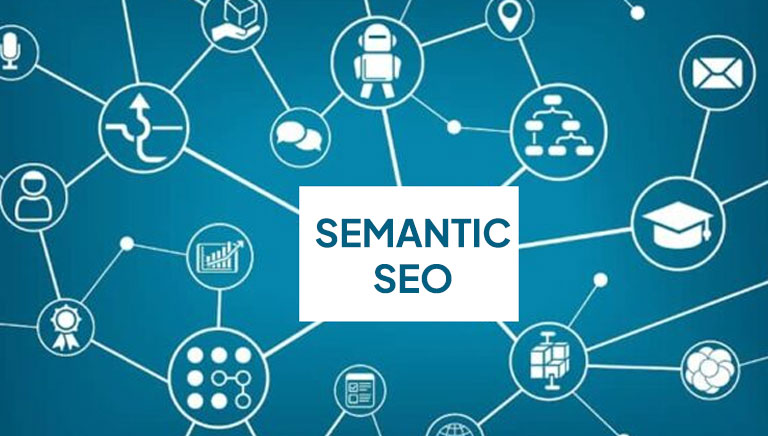Semantic SEO Strategy for 2025: Go Beyond Keywords to Rank

Search engines in 2025 are smarter than ever. Google no longer relies heavily on exact keyword matches. Instead, it understands topics, entities, and context — thanks to its advanced language models and AI-driven algorithms like MUM and Rank Brain. So, how do you rank in this new era? With Semantic SEO.
Let’s explore how Semantic SEO works, why it’s the future of search optimization, and how you can master it to build topical authority and outrank your competition.
What is Semantic SEO?
Semantic SEO is the process of creating content that is centered around the meaning behind a search query — not just the words.
Instead of stuffing keywords, you focus on:
- Entities (people, places, things)
- Topics and subtopics
- Search intent
- Natural language and context
It’s about covering a subject deeply so that search engines know your content is the best answer available.
Why Semantic SEO Matters in 2025
1. Google Understands Concepts, Not Just Words
With AI models like Gemini and the Multitask Unified Model (MUM), Google processes queries more like a human. It compares context, intent, and even multimedia to understand meaning.
2. Exact Match Keywords Are Obsolete
Today, ranking for “best SEO tools” also means understanding and using phrases like:
- top SEO platforms
- tools for search engine optimization
- software for better rankings
It’s not about repeating one phrase — it’s about comprehensively answering the user’s query.
3. Boosts Topical Authority
Google rewards content creators who fully cover a subject. Semantic SEO helps you:
- Rank for more keywords
- Appear in People Also Ask
- Earn featured snippets
Key Components of Semantic SEO
1. Entities and Topics
Entities are recognizable concepts like:
- “Neil Patel” (person)
- “Google Search Console” (tool)
- “On-page SEO” (topic)
When Google sees these within a web of related terms, it understands what your content is about.
Tip: Use tools like Google’s NLP API or Surfer SEO to identify semantic entities.
2. Content Depth
Surface-level content doesn’t cut it in 2025.
You need to:
- Cover subtopics thoroughly
- Answer related questions
- Provide step-by-step details and examples
Example: If writing about “Link Building,” your article should touch on:
- Guest posting
- Broken link strategies
- White-hat vs. black-hat techniques
- Outreach email templates
3. Structured Content
Use clear formatting:
- Logical H2 and H3 headings
- Bullet points and tables
- Schema markup (FAQ, HowTo, Article)
This helps both readers and search engines understand your content better.
4. Internal Linking
Semantic SEO and internal linking go hand in hand.
Each article should:
- Link to related pages
- Use contextual anchor text
- Support clusters and pillars
Example: Link your “Semantic SEO” article to related topics like “Search Intent,” “Topic Clusters,” and “Internal Linking.”
How to Build a Semantic SEO Strategy (Step-by-Step)
Step 1: Choose a Core Topic
Pick a broad, evergreen topic related to your niche.
Example: “Email Marketing”
Step 2: Identify Subtopics and Questions
Use:
- Google People Also Ask
- AnswerThePublic
- Ahrefs/SEMRush
Break it into:
- What is email marketing?
- How to build an email list?
- Best email platforms in 2025?
- Email copywriting tips
Step 3: Create Content That Covers It All
Don’t just write one post. Build a cluster:
- Pillar page: The Ultimate Guide to Email Marketing
- Cluster pages: Each subtopic as a standalone, interlinked article
Step 4: Optimize for Semantic Relevance
Use:
- Synonyms and variations
- Semantic keywords
- Entities from NLP tools
Avoid:
- Keyword stuffing
- Thin or duplicated content
Step 5: Internally Link Everything
Use descriptive anchors to connect all cluster pages to the pillar page — and vice versa.
Tools to Help with Semantic SEO
| Tool | Use Case |
|---|---|
| Surfer SEO | NLP term suggestions and content scoring |
| Frase | Topic research and content briefs |
| MarketMuse | Content depth analysis |
| Ahrefs | Keyword and SERP intent |
| Google’s NLP API | Entity recognition |
Final Thoughts
Semantic SEO isn’t optional in 2025 — it’s essential.
By shifting your focus from keywords to concepts, you’ll:
- Improve rankings
- Win more featured snippets
- Build real topical authority
Start building smarter content that speaks your users’ language — and Google’s.
Next Step? Check out our guides on Search Intent Optimization, Internal Linking Strategies, and Topic Clusters to tie it all together.
FAQs: Semantic SEO in 2025
Q1: Is Semantic SEO just about adding more content?
No. It’s about adding the right content that reflects the user’s intent and context.
Q2: Can I use AI tools to write semantic content?
They can help with research and outline, but human editing is crucial for quality and trust.
Q3: How is Semantic SEO different from traditional SEO?
Traditional SEO focuses on exact keywords. Semantic SEO focuses on meaning, topics, and user needs.
Q4: How long does it take to see results?
Usually 1–3 months if your site is well-structured and content is high-quality.









